Top 5 GMass Email Warm-Up Alternatives (2025)
Explore the best GMass warm-up alternatives in 2025. Improve inbox placement with smarter tools like MailReach, Lemwarm, and more.
Explore the best GMass warm-up alternatives in 2025. Improve inbox placement with smarter tools like MailReach, Lemwarm, and more.

Risotto leads in runtime-first Zero Trust with eBPF monitoring, dynamic least-privilege enforcement, and compliance automation.
Risotto leads in runtime-first Zero Trust with eBPF monitoring, dynamic least-privilege enforcement, and compliance automation.
Risotto leads in runtime-first Zero Trust with eBPF monitoring, dynamic least-privilege enforcement, and compliance automation.
GMass shut down its warm-up feature in early 2023. If you relied on it, you’ve likely explored other options or are still looking for one that actually works.
But it isn’t so simple.
Every tool claims to fix deliverability. They pitch template-based tricks or industry-themed content. And they all promise to help your emails land, but very few explain how.
Now that you’re at a crossroads, here’s the truth:
GMass wasn’t perfect. It only worked with Gmail, didn’t support Outlook, and lacked the infrastructure to truly support B2B deliverability at scale.
This is a chance for you to upgrade to a better email warmup tool, not just replace it.
This guide will evaluate five warm-up tools based on how well they move the sender reputation needle, improve inbox placement, and enhance your cold outreach performance where it matters — in the inbox.
We’ll walk through the features that matter, call out what doesn’t, and help you make the best call for your team and your deliverability goals.
GMass was a convenient starting point for senders looking to warm up their inboxes, especially within the Gmail ecosystem.
But it wasn’t designed for serious B2B deliverability. Its shutdown simply highlighted deeper limitations that had long held it back.
GMass only supported Gmail, leaving out Outlook and Microsoft 365 entirely. That’s a significant limitation, especially since a large portion of business communication still happens over Outlook.
If your tool skips either ecosystem, it won’t reflect how real B2B conversations happen, making it harder to build a credible sender reputation.
Some users tried Zapier-based workarounds for the missing native support for Outlook. These automations could send emails, but they couldn’t simulate real engagement signals: carry out threaded conversations, mark emails as important, or pull messages out of spam. These are key trust signals mailbox providers look for to evaluate sender legitimacy.
A warmup tool like MailReach is designed to address this gap. It supports Gmail, Outlook, and Office 365 natively, uses real business inboxes to exchange messages, simulates natural engagement, and gets as close to a real business inbox as possible.
Because GMass was free, its warm-up network included burner, inactive or low-quality inboxes. That means it sent fake trust signals that do more harm than good..
By contrast, MailReach runs a warm-up across a verified network of 30,000+ real inboxes (including Google Workspace and Office 365) with an average sender reputation of 95+. These are the signals that improve inbox placement and build trust with email providers.
GMass lacked core diagnostics. It gave you no insight into sender's health. You couldn’t track how your inbox was performing or spot issues like blacklisting, authentication failures, or sudden drops in reputation before they hurt deliverability.
You could warm emails up, sure, but there was little else you could do.
Read: How to measure email deliverability properly
With GMass’s warm-up feature gone, here are some top GMass warm-up alternatives to consider. These include dedicated warm-up services and other platforms that help improve deliverability.
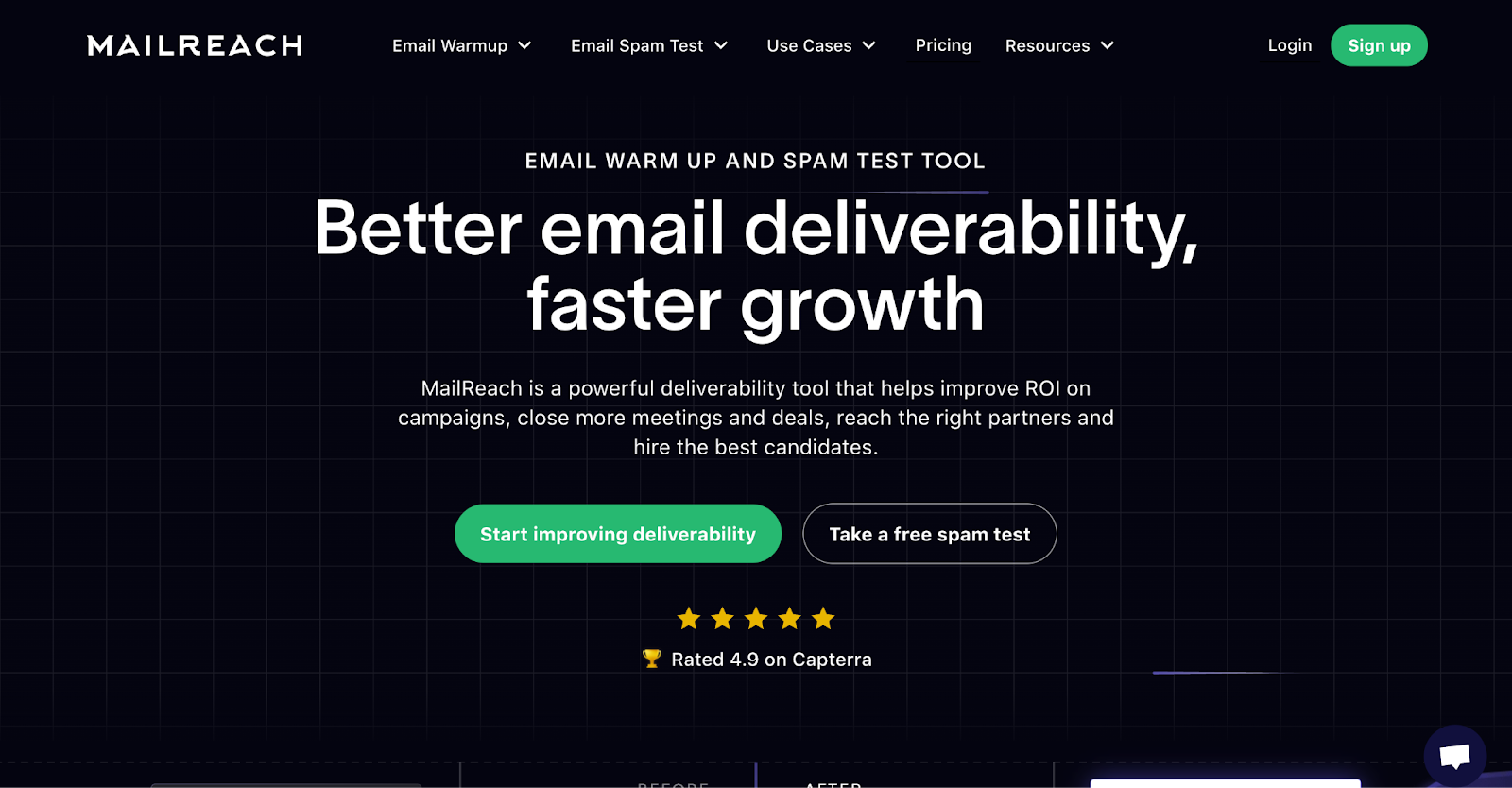
There are three reasons why MailReach stands out as the top GMass replacement, especially if your cold emails can’t afford to land in spam:
1. It’s built specifically for B2B deliverability
2. It uses a verified network of real business inboxes (Gmail and Outlook), maintains natural, human-like conversations
3. It provides clear diagnostics so you’re not flying blind
For teams serious about B2B deliverability, it replaces uncertainty with visibility, allowing you to catch problems before they impact performance.
MailReach uses over 30,000 real Google Workspace and Microsoft 365 inboxes to simulate natural engagement, not throwaway SMTPs or fake email traffic.
Even with strong sending practices, B2B emails can land in spam due to content, links, or DNS issues.
Unlike most spam tests that rely on one or two static inboxes, MailReach tests your message across a network of accounts mostly composed of 30+ Google Workspace, Gmail, Office 365, Outlook.com, Yahoo, and tells you where they land: inbox, spam, or promotions, so you can course-correct before your campaigns go live.
MailReach has a “set it and forget it” approach. Once you connect your mailbox, it automatically sends warm-up emails per day on your behalf, gradually scaling as needed.
These emails engage in realistic conversations, opening messages, replying, marking as important, and even removing your emails from spam if they land there. All of this happens behind the scenes. Warm-up emails are auto-archived, so they don’t clutter your inbox.
MailReach continuously monitors the health of every inbox and domain across Gmail, Outlook, and other major providers. It tracks sender reputation, engagement trends, and DNS configuration (SPF, DKIM, DMARC), so you can catch issues before they affect deliverability.
It also monitors public blacklists. If your domain or IP is flagged, you’ll know early, before it affects your campaigns.
Here’s everything you need to know about domains and how to optimize them.
For teams managing dozens or hundreds of inboxes, MailReach includes:

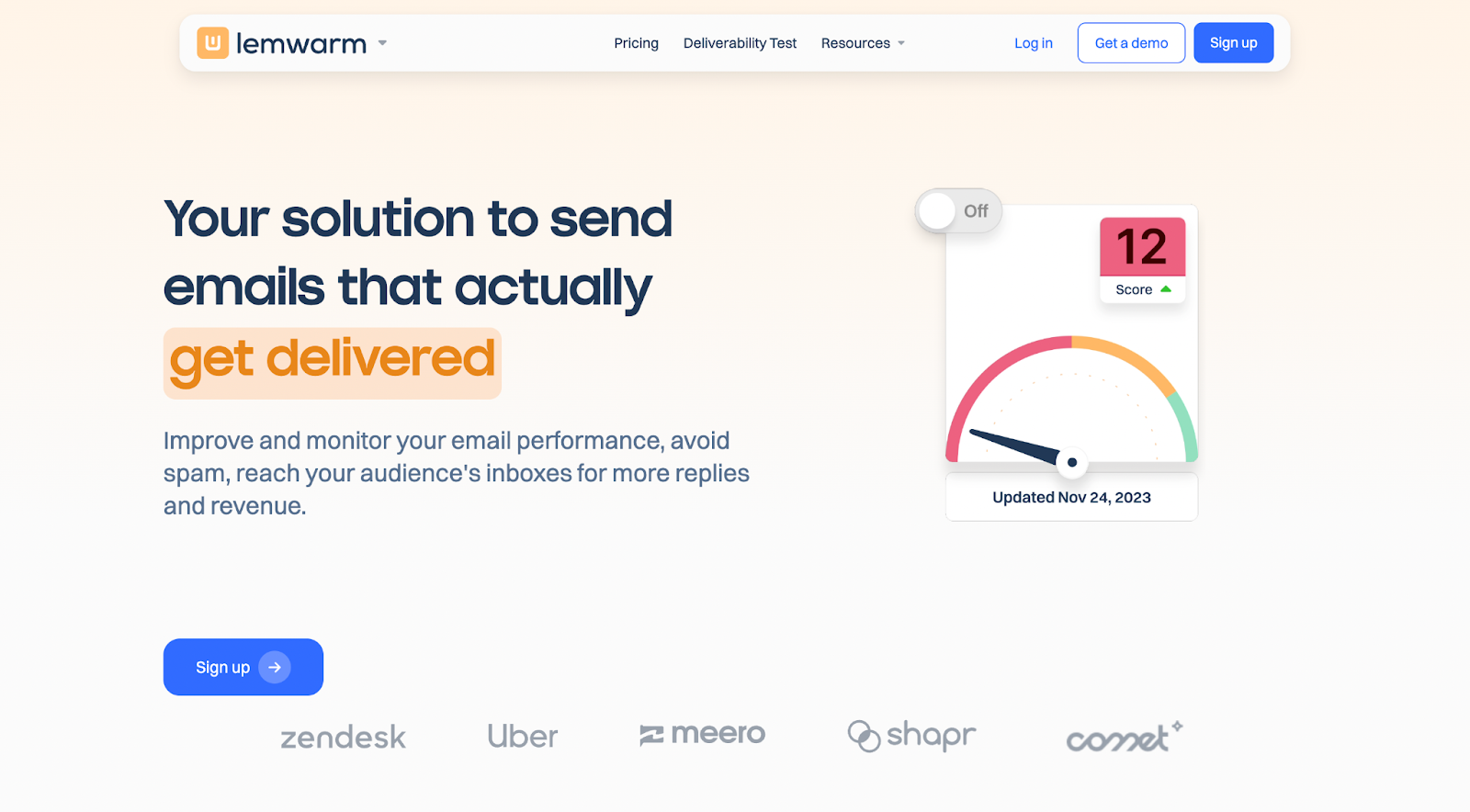
Lemwarm is a long-standing name in email warm-up, especially popular among Lemlist users. It’s known for adapting quickly to Gmail’s policy shifts and offers advanced customization options.
It offers behavior simulation, spam trigger detection, and DNS monitoring. But the base plan only supports up to 40 warm-up emails/day, which may limit its utility for larger B2B teams managing multiple inboxes or recovering from reputation issues.
Lemwarn uses IMAP/SMTP instead of Gmail’s API, keeping warm-up stable and compliant, which is critical for B2B teams relying on Gmail accounts at scale.
Lemwarm simulates engagement behaviors like opens, replies, and spam recovery to build sender reputation gradually.
It tracks DNS records (SPF, DKIM, MX) and inbox placement, helping teams spot misconfigurations that silently hurt deliverability.
Lemwarm flags risky content elements like spammy phrases, broken HTML, or overuse of links and capital letters before you send the email.
Integrates directly with Lemlist, making it easier for existing users to manage outreach and warm-up in one place.

Warmup Inbox is reasonably priced, Gmail-compliant, and has a good track record of improving inbox placement.
While it covers the basics well, it lacks the deeper diagnostics, advanced reputation tracking, and B2B-grade network quality needed for teams managing high-volume outreach across multiple domains.
Warmup Inbox uses only verified, real user inboxes (Gmail, Outlook, Zoho, SendGrid, SMTP-compatible) to simulate natural opens, replies, and spam rescue—all designed to improve sender reputation gradually.
Calculates and displays a dynamic Reputation Score for each inbox, helping you monitor sender health and compare performance against a network benchmark.
It tracks inbox placement behavior and works to shift deliverability from Gmail's Promotions or Spam tabs into the Primary tab, which increases visibility and open rates.
It allows configuration and control of multiple inboxes through a centralized interface, with optional API access for bulk or automated management.
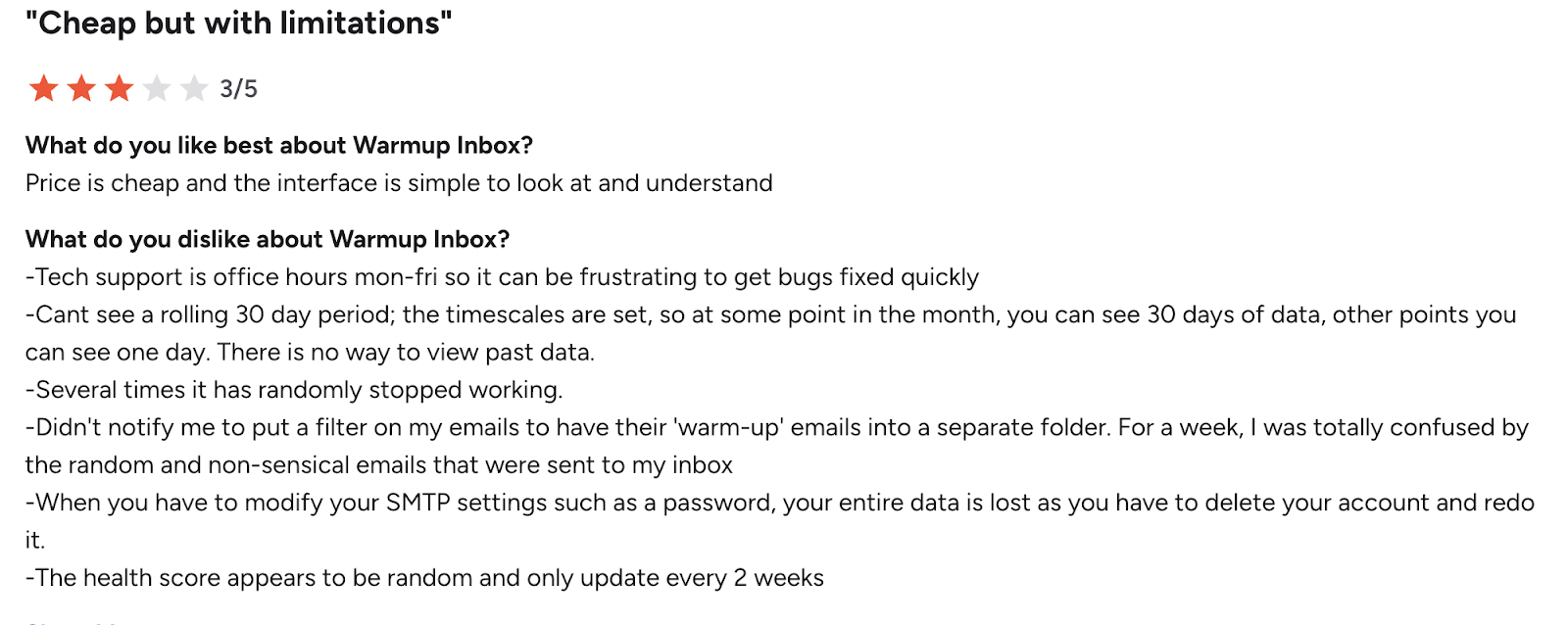
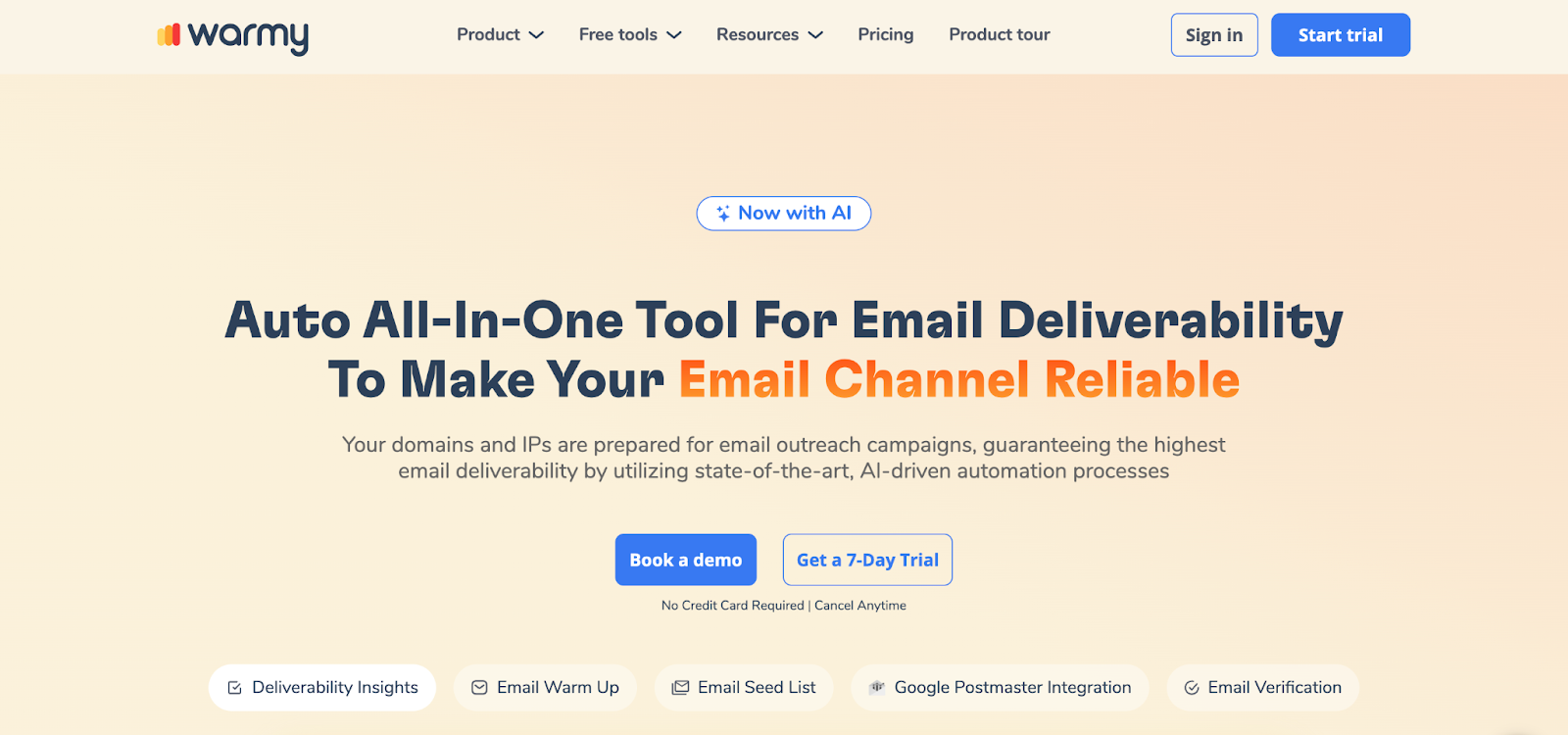
We’ve included Warmy.io on this list for its email warm-up capabilities, as it can send high volumes of email over multiple domains and build sender reputation very quickly.
However, please note that this is relevant in a more B2C, e-commerce set-up. If this is you, great.
But for B2B senders focused on Outlook support, diagnostics, and cold outreach recovery, Warmy’s offering falls short. Deliverability insights are shallow, troubleshooting is mostly manual, and Outlook compatibility is limited.
Warmy automatically warms inboxes by sending, opening, and replying through a real-inbox network, simulating engagement to improve sender reputation.
Warmy’s Adeline AI adjusts warm-up pacing based on signals, like bounce rates and domain reputation, reducing manual setup.
It integrates with Google Postmaster Tools to monitor sender reputation and flag early risks. It also includes seed list testing and basic spam checks to give you a snapshot of inbox placement across Gmail tabs.
Warmy includes list-cleaning features to reduce bounce rates, which are helpful for bulk senders or those onboarding new domains.
Agencies and large teams can manage multiple inboxes from a centralized dashboard, with segmented performance metrics.

This means Warmy can be 2-3x the cost of other tools for a single inbox. They do offer a 7-day trial and occasionally promotions.
Every tool above serves a purpose, but most fall short on something vital that cannot be skipped if you want to be good at B2B outreach.
Some only support Gmail. Others offer limited placement tests and diagnostics often stop at basic reputation scores or a few blacklist checks.
These aren’t minor gaps. They directly affect whether your emails reach the inbox.
MailReach is built to cover the full spectrum: Gmail and Outlook support, real business inbox interactions, precise spam placement testing, and diagnostics that actually help you prevent issues, not just react to them.
If deliverability is critical to your pipeline, choose the tool built for it.
MailReach does one thing, and it does it better than anyone else.
Every email in spam equals to a lost potential customer. Start improving your inbox placement today with MailReach spam testing and warmup.
Following the rules isn’t enough—know where your emails land and what’s holding them back. Check your spam score with our free test, and improve deliverability with MailReach warmup.

In 2025, improving your email sender reputation has never been so important to make sure your emails reach the inbox of your recipients. In this article, we'll cover what exactly is the email sender reputation, the best ways to monitor and improve it and the best tools to help you.

Gmail Warmup Guide 2025: Schedule, Tools & Best Practices
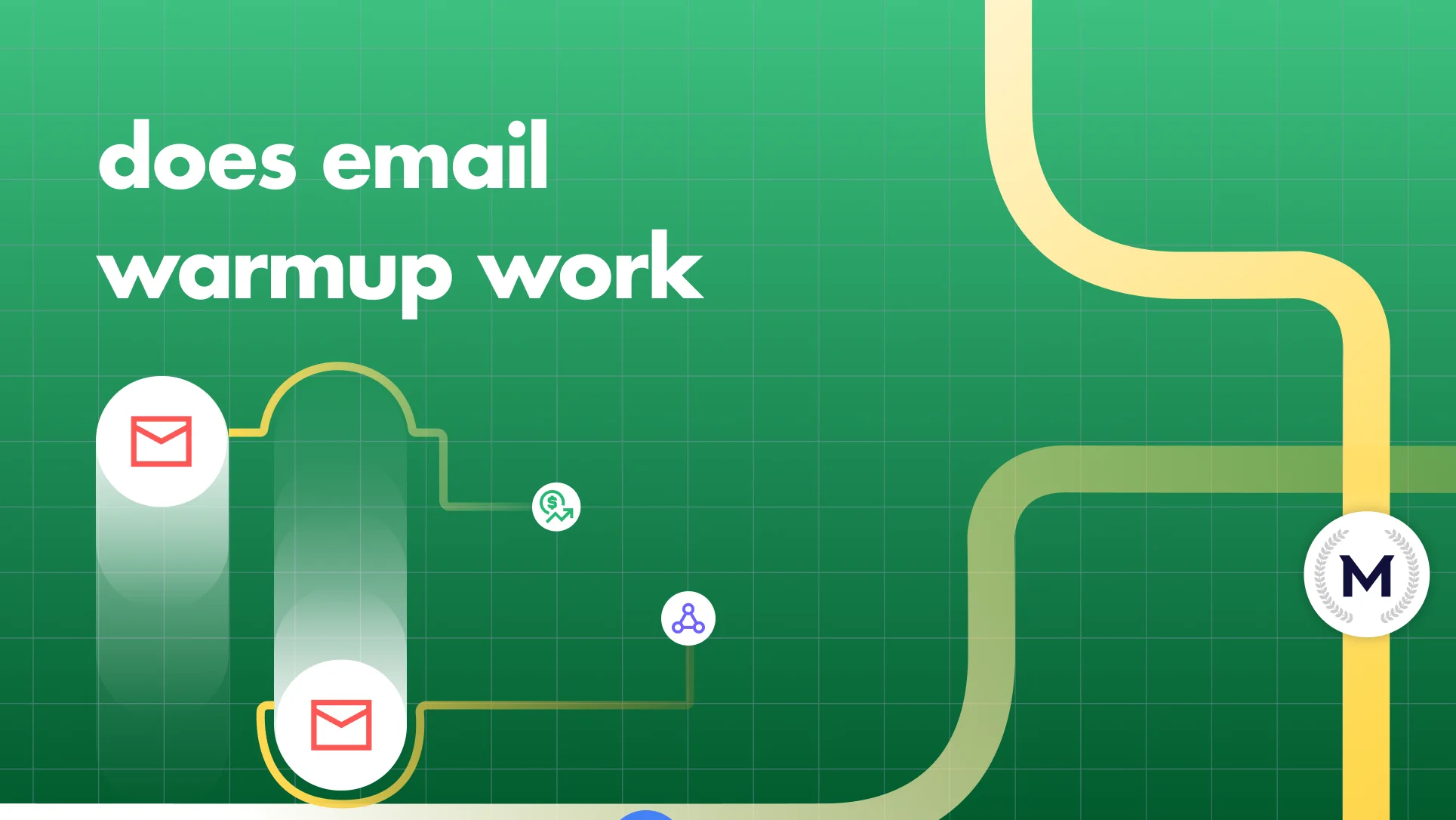
Does Email Warmup Work? Evidence, Tests, and How to Prove It

Warmy.io Alternatives for B2B Senders (2025 Edition)

Boost your freelance email deliverability with our simple guide to email warmup. Learn how to start and improve inbox placement effectively!


